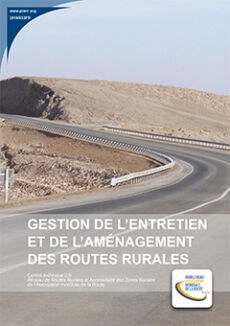PIARC publications from 2012 - 2015 work cycle
This page presents the reports of the 2012-2015 work cycle of the World Road Association (PIARC). They are available in one or more of the three working languages of the Association which are French, English and Spanish and have been published after a meticulous validation and quality control exercise.
They are accessible directly by clicking on the reference in the right column of the table below. This follows the structure of the 2012 - 2015 Strategic Plan:
- Strategic Theme 1: Management and Performance
- Strategic Theme 2: Access and Mobility
- Strategic Theme 3: Safety
- Strategic Theme 4: Infrastructure
Indeed, the World Road Association publishes numerous technical reports, which are reference documents that are widely used in the road and transport sectors. They complement other publications of the Association such as the Routes / Roads magazine, Proceedings of international congresses, Proceedings of international seminars and online Manuals.
These reports are the output of the work of over 1,000 experts during a four-year work cycle. Their involvement and professionalism must be underlined. They are mobilized within Technical Comittees or Task Forces as defined by the Strategic Plan, which structures the activities of the Association and aims to meet the expectations and needs of road administrations and operators and all members of the Association. These reports thus constitute a wealth of information, made available to all. They offer state of the art international best practices on roads and road transport in a context of integrated and sustainable development.
These reports are available free of charge as part of the knowledge sharing and dissemination mission that guides the Association. All language versions are presented simultaneously here, to take into account the reading preferences of each user.
Strategic Theme 1: Management and Performance
Technical Committee 1.1 - Performance of Transport Administrations
-
Evolution of the mission and structure of transport administrations
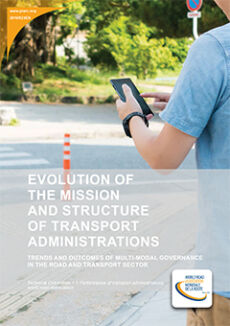
In the 2012 - 2015 WRA Cycle, Working Group 1 has focused on investigating the evolution of missions and structures of road administrations in the context of multi-modal planning and delivery. Included within this scope are various methods of planning integration and informal and formal collaboration between mode-specific delivery agencies, as well as the shift seen in some countries towards the development of new integrated transport agencies with responsibilities, powers and resources across all [...]
-
Guide to good practice performance frameworks
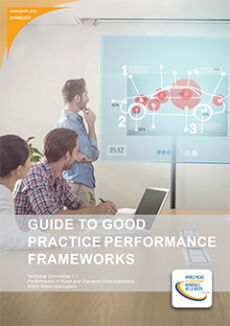
Good performance information is an essential part of good management in any organisation. It assists in ensuring accountability, transparency and aids decision making across the board on a range of activities undertaken by road and transport administrations. Organisations have been collecting information about their own performance and their impacts on society for many years. In recent times the call for this information has become even more important as we seek to improve our own performance [...]
-
Good Governance and Anti-Corruption Measures
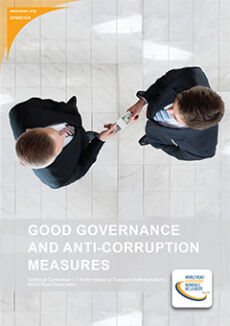
There is increasing emphasis on good governance practice to build and maintain institutional integrity within road and transport administrations. Working Group 3 dealing with "Good Governance and Anti-Corruption Measures" within Technical Committee 1.1 on'Performance of Transport Administrations' of the World Road Association (WRA) has focused its activities on two main elements of integrity: the influence of the media in creating perceptions relating to institutional integrity; the practical [...]
Technical Committee 1.3 - Climate Change and Sustainability
-
Appraisal of Sustainability of Transport Infrastructure Plans and Programs
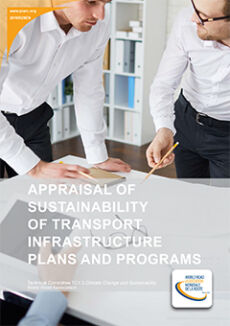
This report gives a scanning overview of the current state of the art on the topic of the appraisal of sustainability within the development of transport plans and investment programs, respectively the extent to which decisions made in this context have taken account of sustainability. The report is based on the result of a questionnaire done within the technical committee and structured around survey findings and case studies. The scope of this technical report was investigated how the sustainability [...]
-
Transport Strategies for Climate Change Mitigation and Adaptation
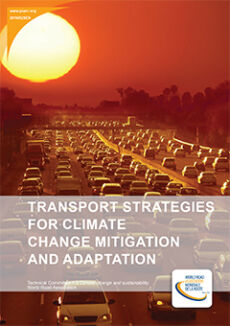
The transport sector is a major and quickly growing source of greenhouse gas emissions. Since 1970, greenhouse gas emissions from the transportation sector have more than doubled, increasing at a faster rate than any other end-use sector, and on-road greenhouse gas emissions have more than tripled, accounting for about 80 percent of the increase in total transport greenhouse gas emissions. Global transport greenhouse gas emissions are expected to increase faster than other sectors without aggressive [...]
Technical Committee 1.5 - Risk Management
-
Risk Management for Emergency Situations
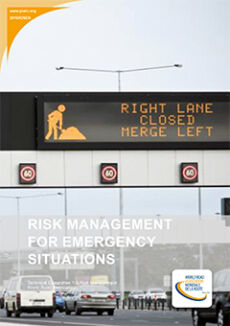
Road transport is critical to the economic vitality of a country. An effective management of emergency situations for combined and large hazards that may disrupt road operation requires cooperation and coordination among several parties of the road and non-road sector including government agencies, the private sector, rescue services and road users. Preparedness, response and recovery constitute the three major phases of emergency situation planning and action. Consultation and appropriate communication [...]
-
Methodologies and tools for risk assessment and management applied to road operations
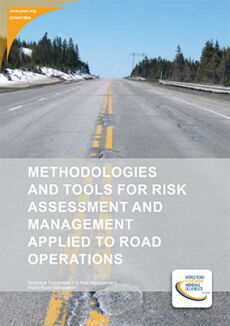
This report deals with methodologies and tools for risk assessment and management applied to road operations including managing risks in relation to the climate change. Chapter 1 of this report starts with a classification of methodologies for risk management of road infrastructure. Particular attention is paid to methodologies that can be applied on object level and those at the strategic level. Pre-existing risk management methodologies are presented as examples on the basis of risk matrices [...]
-
Role of risk-assessment in policy development and decision-making
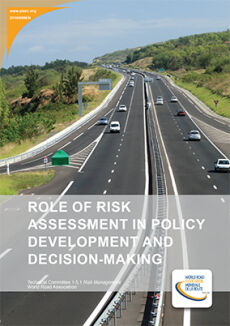
In the context of its 2012 - 2015 work program, PIARC has identified the Role of risk assessment in policy development and decision-making as one of its key issue under the theme TC 1.5 Risk management. This report thus provides a portrait of both the present penetration of risk management policies across countries that were surveyed as well as a snapshot of some of the most advanced risk management policies and practices in the world. The main conclusion from the survey is that although most [...]
Strategic Theme 2: Access and Mobility
Technical Committee 2.1 - Road Network Operations
-
Road network management for improved mobility
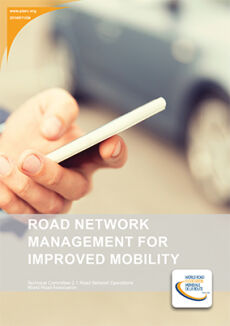
It is useful to review the term "Intelligent Transport Systems (ITS)" in this report. According to the PIARC ITS Handbook, ITS is a generic term to mean integrated communications, control technologies and information processing systems for transport applications. However, in this report, we consider the need to define "ITS" as Intelligent Systems for improving mobility using integrated communications, control and processing technologies of information to meet smart objectives and goals (specific, [...]
-
Uses of ITS including consideration of planning for future improvements, upgrades and the economy
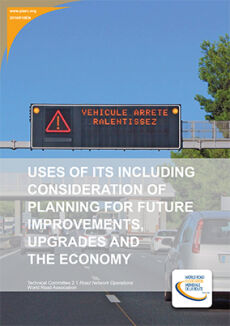
Economic growth typically results in an increase of both freight and passenger traffic. This generally compounds the problems in transportation systems. ITS technologies have been widely used to mitigate many of these transportation challenges and will continue to play an increasingly important role in securing the future of sustainable mobility. Sections 1 and 2 of this report deal with the primary factors that contribute to a sustainable transportation system. It also explores the ITS services [...]
-
Cooperative Vehicle Highway Systems
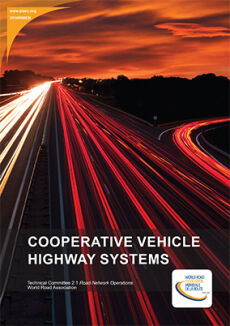
We can consider that the most recent developments of the vehicles are: the massive deployment of sensors, actuators and computers allowing to develop a kind of "vehicle and transport system intelligence"; their ability to communicate among themselves or with the infrastructure through the concept of cooperative systems; the introduction of electric motor combined or not with thermal motor: hybrid vehicles or full electric vehicles. All these changes are beneficial for both the car manufacturers, [...]
Technical Committee 2.2 - Improved Mobility in Urban Areas
-
Key issues for improving mobility strategies in large urban areas
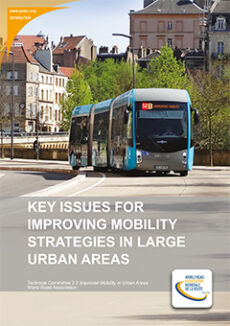
During the period 2012 - 2015, Technical Committee 2.2 collected and evaluated case studies on urban mobility from numerous large and medium-sized cities from all over the world. Three issues were evaluated in these case studies: a comparison of strategies for sustainable urban mobility, at a mobility plan level. the design of transport infrastructure for multimodality in urban areas. te promotion of walking and cycling. In regard to the first issue, the objective was to find out how [...]
Technical Committee 2.3 - Freight Transport
-
Framework for Citywide Road Freight Transport Management
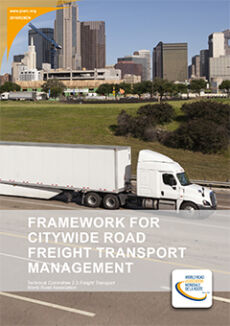
The report entitled "Framework for citywide road freight transport management" of WG1, TC2.3 "Freight Transport" describes the research and findings about the frameworks for public sector road freight transport management (RFTM). RFTM is a key contributor to the sustainable development of urban areas, since good freight transport management supports the creation of efficient and environmentally friendly freight transport systems. The framework of RFTM is characterised by legal, institutional and [...]
-
Moving freight transport forward - Green, smart and efficient
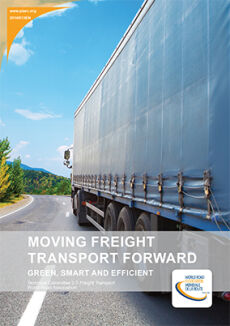
This study addresses the challenges associated with freight transportation efficiency, presenting and analysing a series of good practice examples that reveal efficient freight transportation systems. It should serve as a source of inspiration for making freight transportation more efficient from the perspective of economic, environmental and social sustainability. The concept of co-modality is central to this report and it is defined as the use of each transportation mode in its best configuration [...]
Technical Committee 2.4 - Winter Service
-
Sustainability and Climate Change Considerations in Winter Operations

This report has tried to summarize the knowledge of Climate Change Considerations in Winter Operations. The first step to this project was to source relevant literature on climate change and winter maintenance and sort it into six categories; Level of service for road owners, Maintenance of roads, Forecast models (RWIS), Indicators to find the variation of climate and operations, Different methods, and Infrastructure. Of the papers that were sourced 45 were selected and read and sorted into [...]
-
Advanced technology for data collection and infomation to users and operator
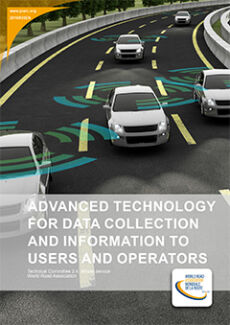
The study that is the subject of this report was defined in the PIARC Strategic Plan 2012-2015 approved by the Council of the World Road Association.The report provides brief summaries of projects from around the world, presented in the form of use cases that are representative of innovative ways of collecting, distributing, and making use of mobile data to assist transportation officials in their winter maintenance operations and to provide information to the traveling public.The use cases or case [...]
-
Crisis management of unusually severe and/or sustained snow events

Extreme winter weather between 2008 and 2015 tested highway winter maintenance arrangements in many parts of the world. Unusually cold weather and significant snow events resulted in significant transport disruption and international media attention. From these challenges arose an opportunity to learn more about, and improve, the service provided to the road user. This report documents the good practice and can be used to aid the further development of winter maintenance resilience. The twenty-two [...]
Technical Committee 2.5 - Rural Road Systems and Accessibility to Rural Areas
-
Promoting sustainable maintenance of rural roads networks
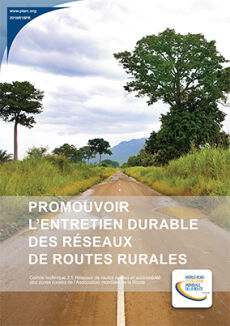
Rural roads are roads or improved trails whose main role is to ensure local exchanges, providing access to rural areas and access to the national or regional primary road network or to the interconnected network. Rural roads are key to development and economic growth of countries and provide considerable social benefits. Inadequate maintenance of rural roads results in reduced mobility; increased vehicle operating costs; increased number of accidents; increased death toll and related consequences; [...]
Strategic Theme 3: Safety
Technical Committee 3.1 - National Road Safety Policies and Programs
-
Land use and safety: an introduction to understanding how land use decisions impact safety of the transportation system
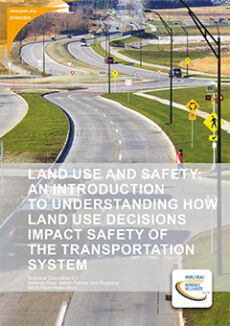
Unplanned communities create hazards for road users of all types generating unsafe conditions for motorists on the roadway and significant dangers for pedestrians, bicyclists and residents alongside or adjacent to the road. While the World Road Association continues to investigate options and recommendations for communities that already exist in these environments, Technical Committee 3.1 generates this report to explain the relationship between land use and transport planning and the need for determined, [...]
Technical Committee 3.2 - Design and Operations of Safer Road Infrastructure
-
Vulnerable road users: Diagnosis of design and operational safety problems and potential countermeasures
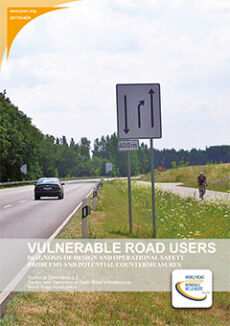
Following the World Health Organisation, nearly half of those dying on the world's roads are vulnerable road users (VRU). This proportion is much greater in low- and middle-income countries, because of the greater variety and intensity of traffic mix and the lack of separation from other road users, than in high-income countries. Compared to other road users the vulnerable user group is particularly exposed to injury as they are not protected by a vehicle shell. For years, pedestrians, cyclists, [...]
-
The Role of Road Engineering in Combatting Driver Distraction and Fatigue Road Safety Risks
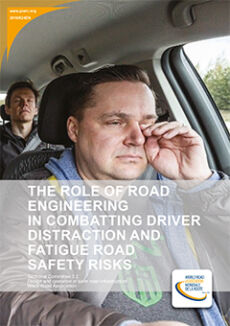
Driver distraction and fatigue are a problem because, as remarkable as our abilities are, we humans are fallible and our abilities have limitations. Driver distraction and fatigue incorporates elements of both limitations and fallibility. On top of our limitations and fallibilities, driving a vehicle is a surprisingly complex task that involves numerous elements. A driver is required to move between these tasks to effectively deal with the ever changing road environment and traffic situation. [...]
-
Human factors guidelines for a safer man-road interface
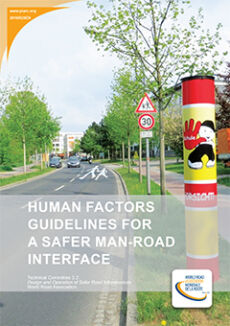
In the case of road safety, the Human Factors concept considers road characteristics that influence a driver's right or wrong driving actions. It understands the causes of road users' operational mistakes as the first step in a chain of actions which may proceed to an accident. Many often observed operational mistakes result from a direct, subconscious interaction between road characteristics and road users' threshold limit values of perception, information processing and action. Because the driver's [...]
Technical Committee 3.3 - Road Tunnels Operations
-
Road tunnel operations: First steps towards a sustainable approach
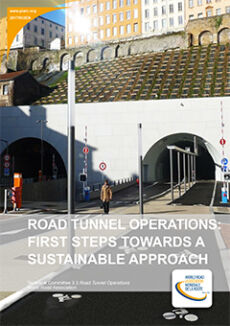
In terms of sustainable development, the current situation in the field of infrastructure varies greatly from one country to another. Certain countries have laid down regulations; a few have set objectives to be achieved, while others have no regulations at all. So far, the World Road Association has not issued any recommendations for road tunnels which reflect the current'State of the Art' in various countries. This document has therefore been produced as an initial means of making up for this [...]
-
Design fire characteristics for road tunnels
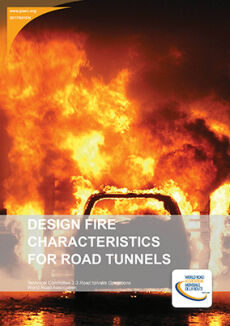
Fire safety in tunnels depends on an amalgam of systems and procedures designed to achieve the best outcome in the event of an incident. The "Design Fire", defined in terms of its magnitude, growth rate and duration, provides a basis for sizing the required systems and anticipating the operational measures that need to be in place. In the case of new tunnels, it may influence the choice of tunnel configuration or the use of additional systems to mitigate consequences. A prescriptive approach [...]
-
Experience with Significant Incidents in Road Tunnels
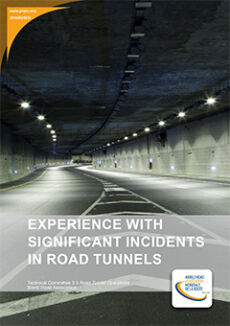
Approximately ten to fifteen years ago many countries introduced tunnel safety management systems and started paying attention to tunnel safety in a more structured way. PIARC report 2007R07 recommended an integrated approach to tunnel safety. As a result of this, many countries have gained experience with the application of various tools for tunnel safety management. Experience with tunnel incidents and methods for incident evaluation and risk analysis have led to developments in organisation [...]
-
Road tunnels: complex underground road networks
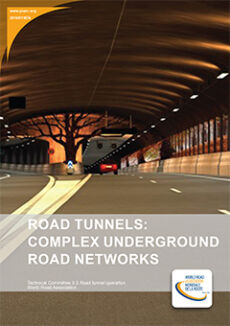
Underground complex road networks are under development in the world due to the growing concentration of the population in large urban areas. The high occupation on the surface, the extension of the perimeter of the metropolises, the growing demand in travel and mobility, lead naturally and inevitably in the development of underground facilities. These developments raise many questions and PIARC wished to participate in this reflection. A first step is crossed with the publication of part A [...]
-
Lay bys and protection against lateral obstacles - Current practices in Europe
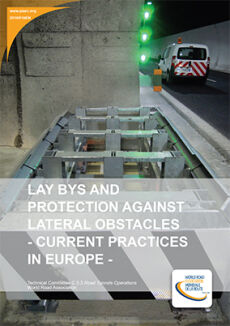
Accidents which have occurred in tunnels have brought to light the danger that the perpendicular end-wall of lay-bys can present to road users in tunnels. Various European representatives of the PIARC Road Tunnel Operations Committee engaged in discussions on the topic of lay-bys and lateral obstacles in tunnels. A workshop was organized on this issue in 2013. This document is a follow-up to the discussions of the workshop. Chapters 1 to 7 present the individual position of each participating [...]
-
Improving safety in road tunnels through real-time communication with users
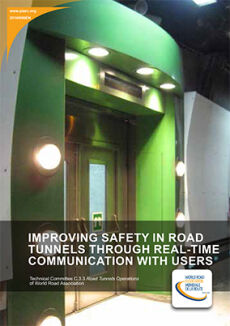
This report is a continuation of the one published by PIARC in 2008 on "Human Factors and road tunnel safety regarding users". It addresses two specific points raised in the conclusion of the 2008 report: "It is most important that motorists understand how to behave in tunnels, in critical situation" "In case of fire, tunnel users should be alerted by at least two different channels of communication". This report describes human behavioural aspects when driving, and how to communicate [...]
-
Fixed fire fighting systems in road tunnels: Current practices and recommendations

Fixed Fire Fighting Systems (FFFS) have been routinely used in road tunnels in countries such as Japan and Australia for decades, and there is increased interest in the use of FFFS in parts of Europe, North America and Asia. Large fire events in road tunnels continue to show the consequences of such an event. These consequences can be to the users, the tunnel infrastructure, and the impact to the wider road network on society. This has maintained the pressure for further improvements to techniques [...]
-
Best practice for life cycle analysis for tunnel equipment
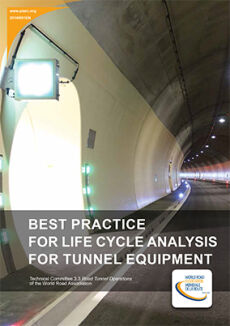
Life Cycle or Life Cycle Cost (LCC) aspects are becoming more important. From an economic point of view, it is important to consider these aspects both in the design and in the operation of tunnel equipment. This best practice report is a natural follow-up to the former report on life cycle aspects of electrical road tunnel equipment [1]. An international survey was conducted in order to gain an insight to how tunnel owners behave today regarding life cycle analysis of technical equipment. 20 [...]
-
Security of road infrastructure
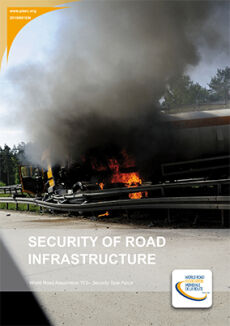
This paper is addressing threats directed to the infrastructure. A correct understanding and a suitable handling of the security of road infrastructure is not only important to safeguard the infrastructure itself, but is also relevant to cover the protection of the social and economic values, the protection of the environment, and even the security of other transportation modes. The objective of the paper is to: provide an overview of the range of security threats and issues that may affect [...]
Strategic Theme 4: Infrastructure
Technical Committee 4.1 - Management of Road Assets
-
Management of road assets: Balancing of environmental and engineering aspects in management of road networks
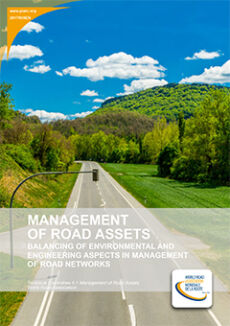
The objective of Working Group 3 (WG3) of The World Road Association (PIARC) Technical Committee (TC) 4.1 was to establish a global perspective on how environmental aspects are considered and addressed in the road asset management process compared with traditional engineering oriented road asset management. There are established environmental legal frameworks in many developed countries that create a statutory obligation on road authorities and their suppliers. Some agencies also adopt guidelines [...]
-
Assessment of budgetary needs and optimisation of maintenance strategies for multiple assets of road network
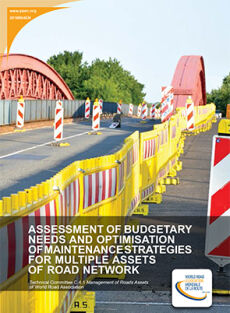
Good road infrastructure is a fundamental basis on which to build a strong economy and society. As the ability to conduct proper maintenance is largely influenced by the available budget, budget definition is an important starting point in realising the overall goal. Based on a comprehensive investigation in the form of interviews with public road administrations and private sector concessionaires, a large quantity of information on good practice in budgetary assessment and optimisation of maintenance [...]
Technical Committee 4.2 - Road Pavements
-
Expected service life of wearing courses

As part of its 2012 to 2015 strategic plan the World Road Association (PIARC) determined the need to identify and review approaches taken in assessing the service life of wearing courses. This report reviews the different approaches taken by road authorities to determine the service life of wearing courses. The aim is to understand why they are replaced and identify the factors that affect decision-making. The service life of a wearing course depends on several factors such as the type of wearing [...]
-
State of the art in monitoring road condition and road/vehicle interaction
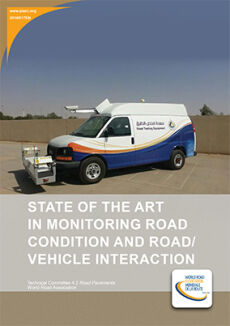
This report summarises the current state of the art regarding the collection of road condition and road/vehicle interaction data, providing an overview of current practice and emerging technologies. Technologies in the development and experimental stages are generally not discussed. The document is intended to concisely inform the reader of the range of technologies available, and not to replicate the considerable detail that is available elsewhere for specific technologies. Each of the commonly [...]
Technical Committee 4.3 - Road Bridges
-
Adaptation of road bridges to climate change
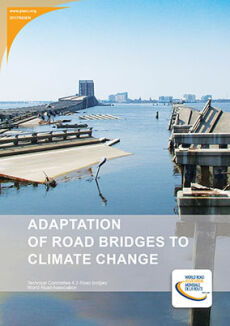
Climate change has now become a global issue of concern and it is for this reason that PIARC has incorporated it into the strategic themes and technical committees for the term 2012-2015. Higher levels of carbon dioxide as part of greenhouse gas emissions are being released resulting in heat being trapped in the atmosphere, which over time will result in a rise in the earth's air temperature. This rise in temperature will filter into the oceans, causing sea water to expand and therefore raise sea [...]
-
Risk-based management of the bridge stock
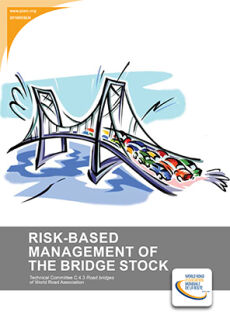
In the past, the Technical Committee 4.3 Road bridges reviewed the bridge management systems implemented in several countries and advised a revision of the management of bridges based on risks (Management of bridge stock 2011 - report ISBN 2-84060-238-5). This report aims to provide some answers with respect to risk-based management for bridges. It discusses the integration of risk-based analyses into the bridge management systems of several countries and gives examples of formal methods of [...]
-
Estimation of load carrying capacity of bridges based on damage and deficiency
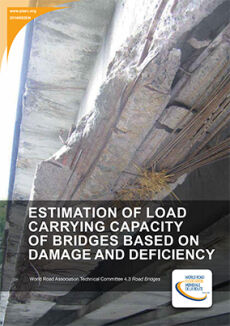
Based on the answers from 18 road authorities in 16 countries this report examines the extent to which an estimation of the load bearing capacity of road bridges is made based on damage and deficiency. The report firstly examines the Codes/Directives/Manuals used for the estimation of the load carrying capacity of road bridges and what triggers the inspection procedures that lead to the estimation of the load carrying capacity. It then deals with the practice of road bridges inspections in different [...]
-
New repair and rehabilitation methods for road bridges
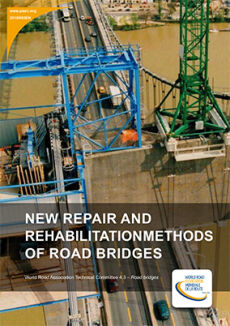
In many countries, the average age of the road bridges stock is over fifty years, and a large number of the bridges are not in good condition. The economic issue leads to the search for innovative solutions to extend the service life of the bridges and rehabilitate them in the most cost-effective way. From an international survey, twenty-two cases of degradation were selected affecting mainly reinforced concrete and prestressed concrete bridges. For each of them, countries were invited to describe [...]
Technical Committee 4.4 - Earthworks and Unpaved Roads
-
Optimal use of local materials in earthworks
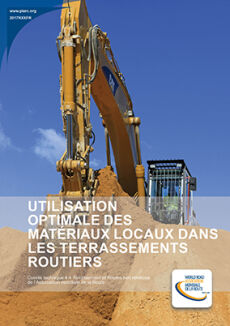
The use of local materials available on the site of a road project is a major concern in the context of sustainable development and perfectly meet socio-economic and environmental criteria. Following a previous survey carried out on this topic during the 2008-2011 cycle, it appeared necessary to launch another survey in order to cover a wide range of knowledge to be shared on the construction of paved and unpaved roads. The aim was to collect information on cases of use of local materials in extreme [...]
-
Preserve your Country's roads to Drive Development
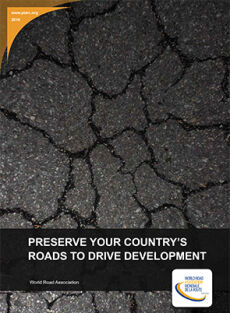
The economy of every country has a strong relationship with its road network. A well preserved network will attract investment and make growth happen. It will also help meet the UN Sustainable Development Goals by improving accessibility and mobility to schools, health facilities and markets. It will also go some way to meeting targets on road safety and climate. This short, well illustrated document explores what key decision takers need to know about the basic principles of road maintenance, [...]
-
The importance of road maintenance
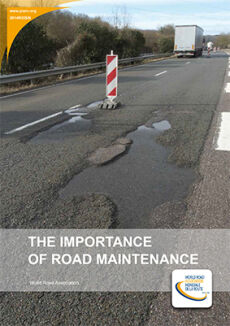
Road infrastructure provides a fundamental foundation to the performance of all national economies, delivering a wide range of economic and social benefits. Adequately maintaining road infrastructure is essential to preserve and enhance those benefits. The importance of maintenance needs to be recognised by decision makers, funded appropriately and well managed to ensure maximum value is achieved. Inadequate levels of investment or poor management of the road network will have serious consequences [...]
-
International climate change adaptation framework for road infrastructure
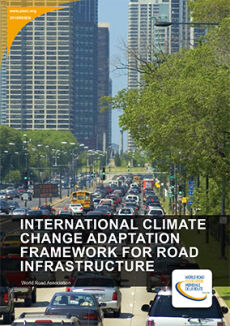
Actions undertaken to mitigate the negative effects of climate change on road networks have varied from one country to another. They include legal, regulatory and institutional measures; promoting other transport modes; introducing new, green technologies; undertaking permanent supervision of embankments and slopes to reduce risks of collapse, accidents and interruptions of service, as well as developing new methodologies and analytical tools to identify, assess and mitigate risks and thus reduce [...]
